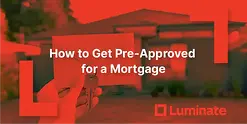How Much Deposit Do You Need to Buy a Home in NZ?
 By
Trent Bradley
·
11 minute read
By
Trent Bradley
·
11 minute read

Buying your first home in New Zealand? The deposit is often the biggest hurdle between dreaming about homeownership and actually making it happen. In New Zealand, most banks require a 20% deposit to buy a home. However, first-home buyers can purchase with as little as 5% deposit through the Kāinga Ora First Home Loan, or 10% deposit with certain bank products. For a $700,000 home, this means deposits ranging from $35,000 (5%) to $140,000 (20%).
Table Of Contents
- What's the Standard Deposit Requirement?
- Can You Buy With Less Than 20% Deposit?
- How Much Is That in Real Dollars?
- What Counts Toward Your Deposit?
- How to Calculate Your Required Deposit: Step-by-Step
- Why a Larger Deposit Is Better (If You Can Wait)
- How to Grow Your Deposit Faster
- Frequently Asked Questions About Home Deposits in NZ
- Final Thoughts
Key Takeaways
- You can enter the market with just 5% deposit through Kāinga Ora First Home Loan—meaning $35,000 on a $700,000 property—but strict income caps apply ($95k individuals, $150k couples) and you're limited by regional price caps
- 20% deposit unlocks everything banks won't tell you—access to all lenders, best interest rates, no low equity premiums (0.25-1% extra), and protection if property values drop, making it worth the wait if you can manage it
- KiwiSaver withdrawal is your secret weapon—after 3 years you can access your entire balance minus $1,000, plus potentially $5,000-$10,000 in HomeStart Grants, often forming 60-80% of first-home buyers' deposits
- Low equity premiums are the hidden tax on small deposits—a $10,000 credit card limit costs you $50,000-$60,000 in borrowing power, and sub-20% deposits add 0.25-1% to your rate, costing thousands annually
- Family gifts require proper documentation—banks need a signed letter confirming it's non-repayable plus proof of funds in the giver's account, making this a common but formal pathway to homeownership
- Every extra dollar in your deposit saves you five in debt—a larger deposit means less to borrow, lower repayments, faster equity building, and crucially, a buffer against market downturns that could leave you in negative equity
Understanding your deposit options is crucial. The amount you need depends on your financial situation, which lender you work with, and whether you qualify for government schemes designed to help first-home buyers enter the market sooner.
At Luminate Financial Group, we guide first-home buyers through deposit planning every day, helping them understand what's realistic for their circumstances and how to structure their finances strategically.
This comprehensive guide covers minimum deposit requirements, low-deposit pathways, government schemes, and proven strategies to reach your deposit goal faster.
What's the Standard Deposit Requirement?
The baseline deposit requirement from New Zealand's major banks is 20% of the property's purchase price. This means if you're purchasing a $700,000 home, you'll need to contribute $140,000 from your own resources—whether that's personal savings, KiwiSaver funds, or gifted money from family.
Why Do Banks Prefer 20%?
Banks set this threshold because it significantly reduces their lending risk. When you contribute 20% equity upfront, you have substantial "skin in the game," making you less likely to default on the loan. Additionally, if property values decline, the bank's loan remains protected by your equity buffer.
Borrowers with less than 20% deposit are classified as "high LVR" (loan-to-value ratio) borrowers. While you can still get approved, expect stricter lending criteria, additional conditions, and often higher costs.
Can You Buy With Less Than 20% Deposit?
Absolutely. Many first-home buyers across New Zealand successfully purchase homes with just 10% deposit, and in some cases, as little as 5%. However, accessing these low-deposit options requires meeting specific eligibility criteria or utilizing particular loan products.
Here are the main pathways to homeownership with a smaller deposit:
Kāinga Ora First Home Loan
The Kāinga Ora First Home Loan is a government-backed initiative that enables eligible first-home buyers to purchase with as little as 5% deposit. Participating lenders (including select banks and credit unions) issue these loans with Kāinga Ora providing the underwriting guarantee.
Eligibility requirements include:
- Income caps: $95,000 for individuals or $150,000 for couples (varies by region)
- Purchase price must fall under regional price caps
- Must be purchasing your first home (or haven't owned property in at least 3 years)
- Property must meet Kāinga Ora's standards
Example scenario: A couple earning a combined $130,000 annually could qualify to purchase a $600,000 home using just $30,000 deposit (5%), provided the property meets all Kāinga Ora requirements and falls within their regional price cap.
Bank Low-Deposit Products
Some lenders offer 90% home loans (requiring only 10% deposit) to borrowers who demonstrate strong financial profiles. These products typically favor applicants with:
- Stable, above-average income
- Excellent account conduct and credit history
- Low existing debt obligations
- Strong savings habits
Important considerations: Low-deposit bank loans often carry higher interest rates and may include a "low equity premium" (LEP)—an additional margin added to your rate that can cost thousands of dollars annually. Lenders use these premiums to offset the increased risk of lending with less security.
Family Assistance Options
Family support remains one of the most common ways first-home buyers bridge deposit gaps. This assistance can take two forms:
Cash gifts: Non-repayable funds from parents or family members. Banks require written confirmation that the gift doesn't need to be repaid, along with documentation proving the source of funds.
Guarantor arrangements: A family member (usually parents) uses equity in their own property as additional security for your loan. This can help you borrow more or get approved with a smaller deposit. However, it carries significant risk for the guarantor, so legal advice is essential.
Non-Bank Lenders
Alternative or non-bank lenders often provide more flexibility around deposit requirements. They may be particularly helpful for buyers who are:
- Self-employed with variable income
- Rebuilding credit history
- Purchasing non-standard properties
- Unable to meet major bank criteria
Trade-offs: These lenders typically charge higher interest rates and fees, and may require larger income buffers to service the loan. However, they can provide a pathway to homeownership when traditional options aren't available.
How Much Is That in Real Dollars?
Understanding deposit requirements in concrete terms helps with planning. Here's what deposits look like across different purchase prices:
| Purchase Price | 5% Deposit | 10% Deposit | 20% Deposit |
|---|---|---|---|
| $500,000 | $25,000 | $50,000 | $100,000 |
| $650,000 | $32,500 | $65,000 | $130,000 |
| $800,000 | $40,000 | $80,000 | $160,000 |
| $950,000 | $47,500 | $95,000 | $190,000 |
Even with KiwiSaver contributions helping you along, these are substantial amounts. However, saving becomes more achievable when you know your specific target and create a structured plan to reach it.
What Counts Toward Your Deposit?
When lenders assess your deposit, they're evaluating your genuine equity contribution—the money you're putting toward the property from your own resources. Acceptable sources include:
KiwiSaver First-Home Withdrawal
After contributing for at least three years, you can withdraw most of your KiwiSaver balance to put toward your first home deposit. You must leave $1,000 in your account, but everything else can be used. This is often the largest component of a first-home buyer's deposit.
Bonus: You may also qualify for the KiwiSaver HomeStart Grant, which provides up to $5,000 for individuals or $10,000 for couples (for existing properties) or up to $10,000 for individuals or $20,000 for couples (for new builds). This grant has specific eligibility criteria based on income and KiwiSaver contribution years.
Personal Savings
Any cash you've saved in transaction accounts, savings accounts, or term deposits counts toward your deposit. Banks typically want to see a consistent savings pattern over several months, demonstrating financial discipline.
Family Gifts
Non-repayable gifts from family members are widely accepted. Your lender will require:
- A signed letter confirming the gift is not repayable
- Bank statements proving the funds exist in the giver's account
- Evidence the funds have been transferred to you
Equity in Existing Property
While uncommon for first-home buyers, if you own other assets or have a family purchase structure where you hold partial ownership, this equity may be usable. Your mortgage adviser can explain whether this applies to your situation.
What Doesn't Count
You cannot use borrowed money as your deposit unless it's specifically disclosed and approved by your lender—which typically reduces your borrowing capacity. This includes:
- Credit card advances
- Personal loans
- Buy-now-pay-later debts
- Any other borrowed funds
Lenders need to see genuine savings, not leveraged debt, forming your deposit base.
How to Calculate Your Required Deposit: Step-by-Step
Knowing exactly how much you need to save removes guesswork and helps you create an actionable plan.
Step 1: Determine Your Target Purchase Price
Research current property prices in your desired location using platforms like realestate.co.nz, homes.co.nz, or TradeMe Property. Be realistic about what's available within your likely budget range. Consider:
- Current market prices in your preferred suburbs
- Property types you're interested in (apartments, townhouses, standalone homes)
- Trends showing whether prices are rising or falling
Step 2: Calculate Your Deposit Amount
Once you know your target price, calculate your required deposit based on which percentage you're aiming for:
- 5% deposit: Purchase price × 0.05
- 10% deposit: Purchase price × 0.10
- 20% deposit: Purchase price × 0.20
For example, on a $700,000 home:
- 5% = $35,000
- 10% = $70,000
- 20% = $140,000
Step 3: Check Your KiwiSaver Balance
Log into your KiwiSaver provider's online portal to view your current balance. Remember to subtract the $1,000 you must leave in the account. This gives you your available KiwiSaver amount.
Step 4: Calculate Your Savings Gap
Subtract your available KiwiSaver balance from your required deposit amount. The result is how much additional cash you need to save.
Example: If you need $70,000 (10% of $700,000) and have $45,000 in KiwiSaver available, your savings gap is $25,000.
Step 5: Check HomeStart Grant Eligibility
If you've contributed to KiwiSaver for 3+ years and meet the income requirements, you may qualify for the HomeStart Grant. This could provide:
- $5,000 (single buyer, existing home) or $10,000 (couple, existing home)
- $10,000 (single buyer, new build) or $20,000 (couple, new build)
This can significantly reduce or even eliminate your savings gap.
Step 6: Create a Savings Timeline
Divide your savings gap by your realistic monthly savings amount. This tells you approximately how long until you reach your deposit goal.
Example: $25,000 gap ÷ $1,000 per month = 25 months (just over 2 years)
Set up automatic transfers to a dedicated high-interest savings account each payday to stay on track.
Step 7: Get Pre-Approved
When you're within 3-6 months of your deposit goal, consult with a mortgage adviser to get pre-approved. Pre-approval:
- Shows you exactly how much you can borrow
- Identifies any potential issues with your application early
- Gives you confidence when making offers
- Demonstrates to sellers that you're a serious buyer
Why a Larger Deposit Is Better (If You Can Wait)
While entering the market with 5% or 10% deposit is possible, there are compelling advantages to saving 20% or more if your circumstances allow:
Access to Better Interest Rates
Banks reserve their most competitive interest rates for low-risk borrowers—those with 20% or more equity. Even a 0.25% lower interest rate can save you tens of thousands of dollars over the life of your mortgage.
Lower Monthly Repayments
The more you contribute upfront, the less you need to borrow. Smaller loan amounts mean lower weekly or fortnightly repayments, giving you more breathing room in your budget for other goals and emergencies.
Avoid Low Equity Fees
High LVR loans often come with additional costs:
- Low equity premiums (LEP): Extra margin added to your interest rate
- Establishment fees: Some lenders charge higher fees for high LVR loans
- Restricted products: You may not have access to the best loan structures
Stronger Overall Application
A higher deposit can compensate for other application weaknesses such as:
- Shorter employment history
- Self-employed or variable income
- Higher living expenses
- Less-than-perfect credit history
Greater Financial Resilience
More equity provides protection if:
- Property values decline
- Your income reduces unexpectedly
- You need to sell or refinance
- Interest rates increase significantly
If you buy with 10% deposit and house prices fall 10%, you could find yourself with zero or negative equity, making it extremely difficult to refinance or sell without bringing cash to the table.
When Buying Sooner Makes Sense
Despite these advantages, waiting several extra years to reach 20% doesn't always make financial sense. In a rising market, buying sooner with 10% deposit and benefiting from capital growth might outweigh the savings from a lower interest rate. Your mortgage adviser can help you model both scenarios based on your specific circumstances.
How to Grow Your Deposit Faster
If you're in the early stages of saving, these strategies can accelerate your progress significantly:
Automate Your Savings
Set up an automatic payment to transfer money into a separate savings account on every payday—ideally before you have a chance to spend it. Treating your deposit savings like a non-negotiable bill ensures consistent progress.
Optimize Your KiwiSaver Contributions
Review your contribution rate. If you're on the minimum 3%, consider increasing to 4%, 6%, or even 8% if your budget allows. Remember that your employer matches up to 3% of your gross salary, and the government contributes $521.43 annually (if you contribute at least $1,042.86). These matching contributions significantly boost your balance over time.
Pay Down High-Interest Debt
Credit cards, personal loans, and car loans charging high interest rates not only drain your savings capacity but also reduce how much banks will lend you. Focus on clearing these debts first—the interest savings alone will accelerate your deposit accumulation.
Set Specific, Measurable Goals
Instead of vaguely "saving for a house," know your exact target. Whether it's $65,000 for a 10% deposit or $130,000 for 20%, having a concrete number keeps you motivated and focused. Track your progress monthly.
Review and Reduce Discretionary Spending
Track where your money goes for one month. Many people find hundreds of dollars in small expenses that don't align with their priorities. Common areas to review:
- Subscription services you rarely use
- Dining out and takeaway frequency
- Entertainment and hobby spending
- Unnecessary vehicle costs
Even finding $200 extra per month adds $2,400 annually to your deposit.
Increase Your Income
While harder than cutting expenses, boosting income can dramatically shorten your savings timeline:
- Negotiate a pay rise with your current employer
- Take on additional hours or overtime
- Start a side business or freelance work
- Sell items you no longer need
Use Windfalls Wisely
Direct unexpected money straight into your deposit savings:
- Tax refunds
- Work bonuses
- Inheritance or gifts
- Income from selling assets
Consider a Flatting Situation
If you're currently renting alone or with a partner, taking on an additional flatmate (even temporarily) can free up significant money for deposit savings. While it requires some sacrifice of privacy, it can cut years off your savings timeline.
Frequently Asked Questions About Home Deposits in NZ
Can I buy a house in NZ with a 5% deposit?
Yes, through the Kāinga Ora First Home Loan scheme. You must meet income caps (currently $95,000 for individuals or $150,000 for couples in most regions), purchase under the regional price cap, and be a first-home buyer. The property must also meet Kāinga Ora standards.
What is the average deposit for a first home in New Zealand?
Most first-home buyers in New Zealand save between 10-20% deposit. For a $700,000 home, this means $70,000 to $140,000. However, with government schemes, some buyers enter the market with as little as 5% ($35,000 on a $700,000 property).
Can I use my KiwiSaver for a house deposit?
Yes. After contributing for at least three years, you can withdraw your KiwiSaver balance (minus $1,000 you must leave in the account) to use toward your first home deposit. You may also qualify for the KiwiSaver HomeStart Grant of up to $5,000 (singles) or $10,000 (couples) for existing homes, or double those amounts for new builds.
Do I need 20% deposit to avoid mortgage insurance in NZ?
New Zealand doesn't have mortgage insurance like other countries. However, loans above 80% LVR (less than 20% deposit) are considered high-risk and often come with low equity premiums, higher interest rates, and stricter lending criteria.
What is a low equity premium and how much does it cost?
A low equity premium (LEP) is an additional fee or margin charged by banks when you borrow more than 80% of the property value. It typically adds 0.25% to 1.00% to your interest rate, which can cost thousands extra per year depending on your loan size.
Can my parents gift me money for a house deposit?
Yes. Family gifts are commonly used for home deposits in NZ. The bank will require a letter confirming the gift is non-repayable and may ask for proof of where the funds came from (bank statements showing the money in your parents' account).
How long does it take to save a house deposit in New Zealand?
This varies significantly based on income, expenses, and savings rate. On average, first-home buyers take 3-7 years to save a deposit. Using KiwiSaver, automatic savings plans, and the HomeStart Grant can significantly reduce this timeframe.
What happens if house prices drop after I buy with a small deposit?
If you buy with a 10% deposit and house prices fall by 10%, you could end up with zero or negative equity. This makes it difficult to refinance or sell. Having a 20%+ deposit provides a buffer against market fluctuations and gives you more financial flexibility.
Final Thoughts
There's no single "correct" deposit amount when buying a home in New Zealand. Your optimal deposit depends on your income, location, timeline, and financial goals. Some buyers successfully enter the market with 5% or 10% deposit through schemes like the Kāinga Ora First Home Loan or bank low-deposit products. Others prefer to wait and save 20% to access better loan terms, lower rates, and avoid low equity premiums.
The most important step is understanding your realistic options and creating a clear plan tailored to your circumstances. Whether you're just starting your deposit savings journey or you're nearly ready to buy, having expert guidance makes the process smoother and often faster.
At Luminate, we specialize in working with first-home buyers to assess deposit strategies, check eligibility for government support, and compare lenders to find the best fit for your situation.
Want to know how close you are to your deposit goal?
Book a free First-Home Deposit Strategy Session with Luminate.
We'll help you:
- Check your KiwiSaver eligibility and available balance
- Run the numbers on different deposit scenarios
- Build a custom savings plan to reach your goal sooner
- Identify any government grants or schemes you qualify for
- Get pre-approved so you're ready when the right property appears
Contact Luminate Financial Group:
📞 Call 0800 333 400📧 Email askus@luminate.co.nz
🌐 Visit luminate.co.nz
Your path to homeownership starts with understanding your deposit options. Let's create a plan that works for you.

Trent Bradley
Trent Bradley is a New Zealand financial advisor specializing in property-backed finance and investment consulting. With over 26 years of experience running his mortgage broking business, he has helped wholesale investors access high-yield property-backed loan opportunities. For the past 12 years, Trent has led Luminate Finance, a New Zealand finance company dedicated to connecting investors with secure property investment solutions.























